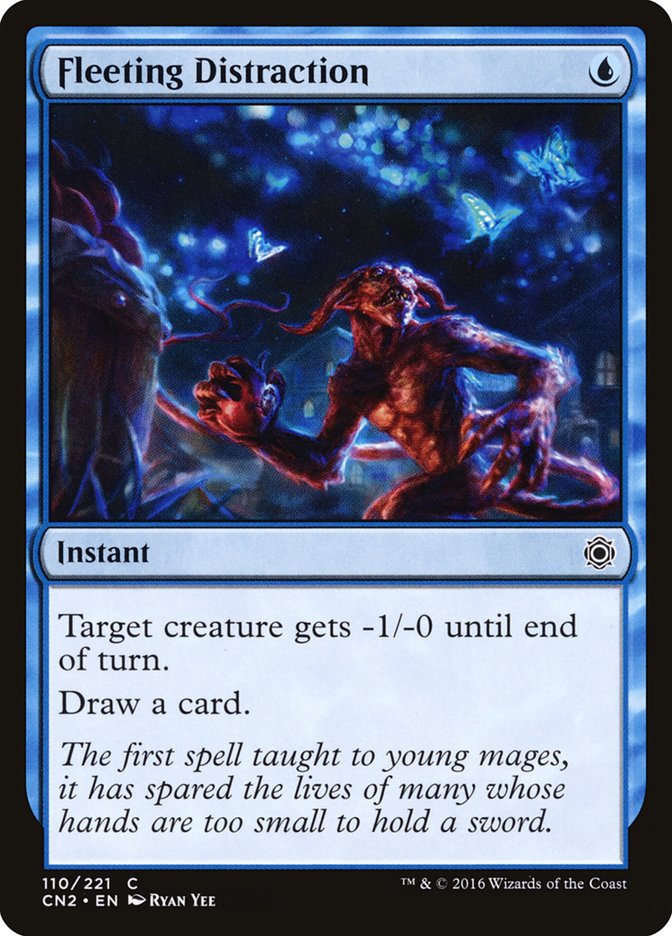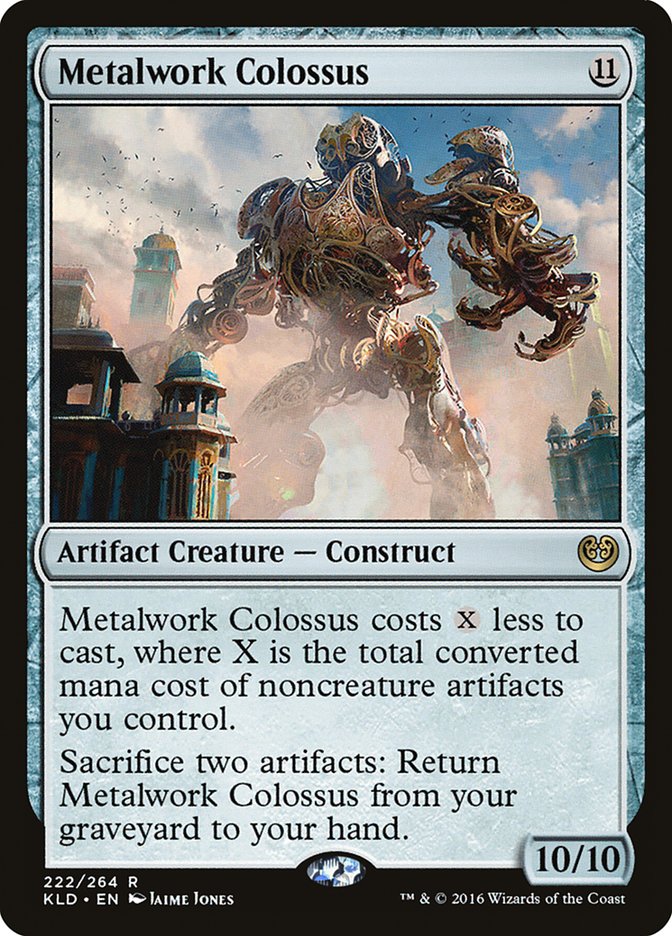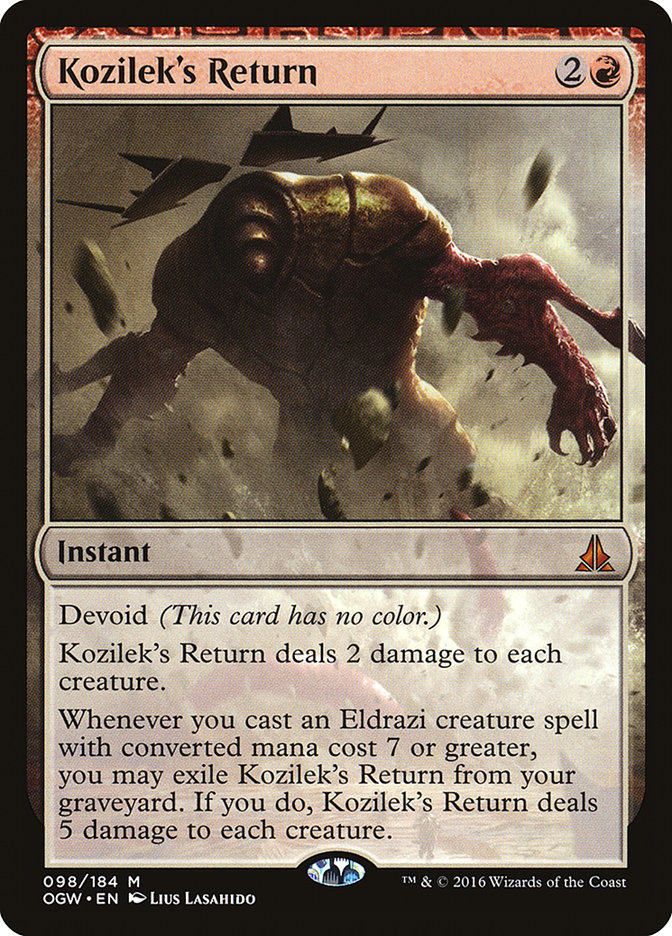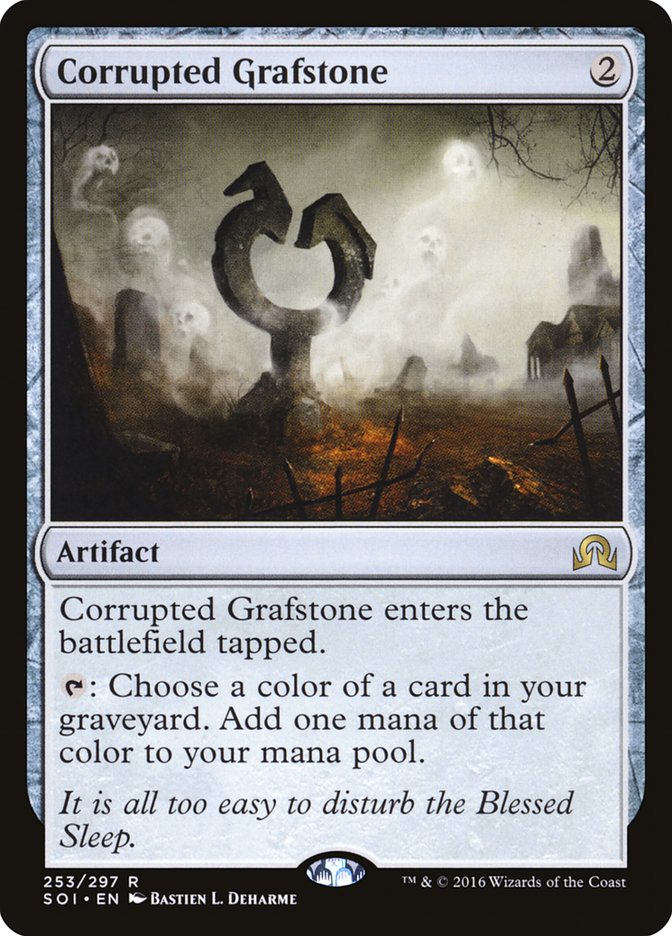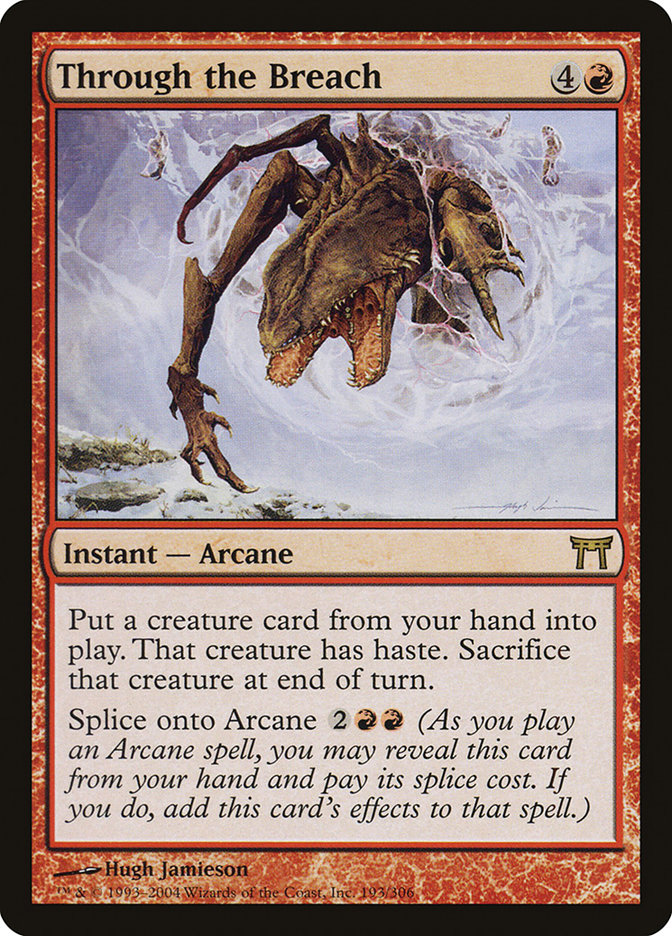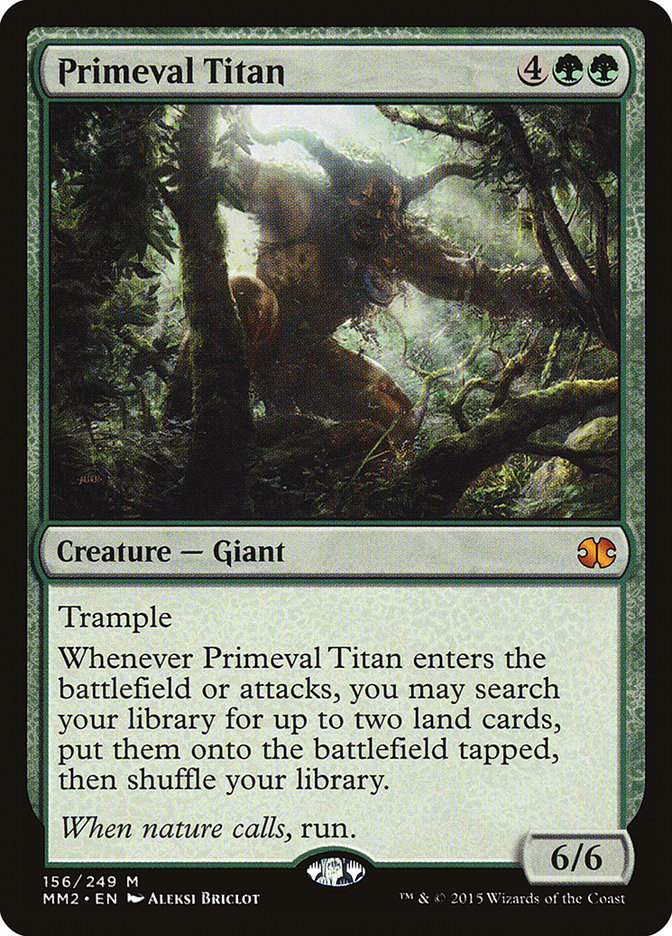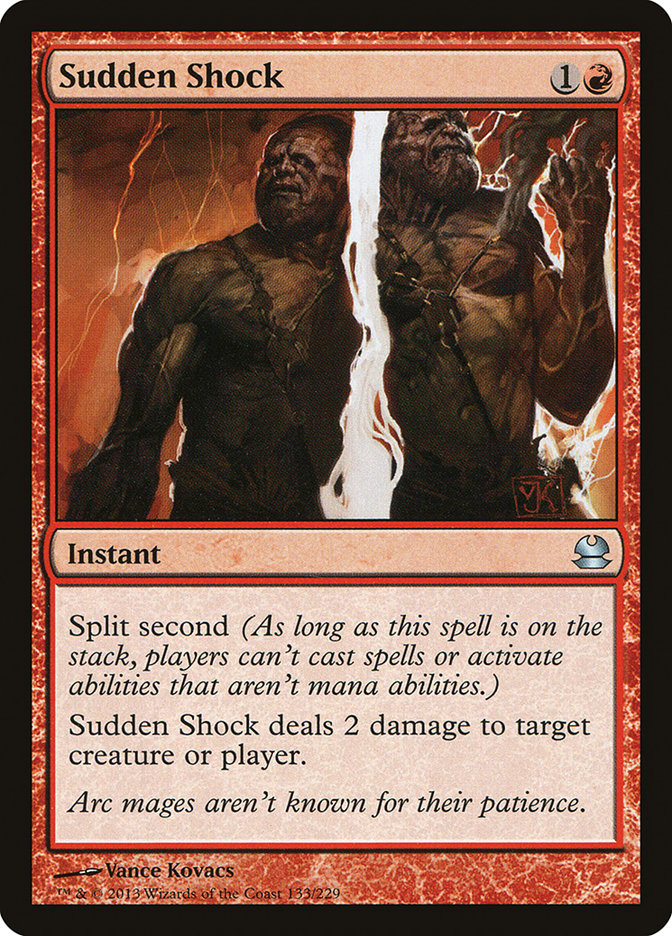It feels like I was just here, but it’s that time again. The Season Three SCG Invitational is mere days away and I couldn’t be happier that it’s in Atlanta. I think of it fondly as a second home that’s full of friends, family, and a couch with my name on it.
What I haven’t been doing much lately is thinking about Magic. This is a stark contrast to the last full year of my life, but between a relatively stagnant Standard and a light mix of events, I’ve largely been exploring other games and branching back into some other activities I enjoy.
Last week I grinded into and participated in the Epic World Championship, which was a refreshing change of pace in terms of a competitive environment. I didn’t do well in the main event but thoroughly enjoyed the experience.
Between hanging out to test for the aforementioned and traveling, Gerry Thompson has introduced me to a bevy of digital card games in the past month or so. Applying my base skill set to those games in addition to exploring a large number of card pools and often trying to piece together “budget” decks to compete on their ladders quickly is a lot of fun.
I find there to be quite a bit of value in getting to flex different strategic muscles against a wide variety of new mechanics and challenges. Additionally, analyzing these new games from a design perspective is similarly rewarding. How do the resource systems and combat mechanics compare to Magic? What kind of design space is being properly explored and utilized as a result of a digital platform? Frankly, am I having fun and feel rewarded for investing time in this game?
Of course, these are ultimately distractions, with some being longer than others depending on how obsessive I’m feeling on a particular day. Magic is the best game on Earth, my passion, my job.
I’ve got a solid week to get some decks together. I don’t expect there to be much rust.
Standard
You have all been exposed to nothing but the conversation of B/G Delirium versus W/U Flash for a month. I’m not interested in discussing the micro nature of those decks. There’s certainly a chance that I register B/G Delirium at the Invitational, but it’s low.
Standard has even worked a step further trying to identify the best “anti-those-two-decks-deck.” It would appear that most agree it is Jaberwocki’s crack at R/G Aetherworks.
Creatures (11)
Planeswalkers (3)
Lands (22)
Spells (24)

Team Nexus took it a step further with their take on B/G Aetherworks, hoping to combine some of the generic power of B/G Delirium with the impressive power of Aetherworks Marvel. Their deck certainly intrigues me, and I think it is a step in the right direction to “solving Standard.”
I’ve worked a lot on Metalwork Colossus both surrounding the Pro Tour and after. At first it made sense to me as the tool to beat the metagame, as the Colossus deck slices through Delirium barring some absurd combination of sideboard cards, but it doesn’t have the greatest matchup on paper against aggressively slanted decks or even W/U Flash.
While the movement towards Revolutionary Rebuff makes the latter look a lot more manageable, there’s still the reality that the metagame is shifting. Should those incidental copies of Fragmentize and Appetite for the Unnatural begin to start popping back up, it suddenly becomes a lot harder to execute your gameplan when you are continuously trading your mana at a rate of four-to-one.
What I have begun to notice is that Kozilek’s Return doesn’t look as weak anymore.
If B/G Delirium is simply trying to set up with a variety of lowball creatures and Ishkanah, Grafwidow before beating you with their singleton Emrakul, the Promised End, Kozilek’s Return should buy all the time in the world, assuming that you leverage it to do something powerful enough to beat their Eldrazi.
Selfless Spirit and Archangel Avacyn theoretically pose a problem towards the card’s effectiveness, but I’ve always thought that this issue was overblown. I was more than happy trying to trigger Kozilek’s Return from my graveyard when Bant Company played the aforementioned creatures.
If you’ve guessed that I’m interested in playing some form of emerge strategy, you’d be right, but probably not in the way that you would initially think.
While I haven’t exactly been working on Standard in the past month in terms of tuning a deck, I’ve been exploring a lot of interlocking pieces.
For example, despite the fact that I think Metalwork Colossus is a poor choice, I still believe that I’ve done good work towards elevating the generic power level of the archetype. A lot of that has come through trial and error and a few key conversations with folks bearing the last name Thompson.
A lot of how I’m proposing to build an Emerge deck moving forward is on borrowed technology. Check out this decklist:
Creatures (7)
Lands (22)
Spells (31)

I’ve spilled a lot of ink in the past talking about the merits of Aetherworks Marvel in Colossus strategies, and I stand by that assertion. Having a two-pronged attack that naturally accumulates resources on the battlefield while simultaneously fueling your main engine is a huge boon to the archetype.
The other “engine” in this deck is a lot more subtle and frankly will prove to be criminally underplayed historically in the context of this Standard. Corrupted Grafstone is the real deal.
Specifically, Grafstone is great in a strategy built upon maximizing the utility of a stack of Lay of the Land look-alikes. Combined with Vessel of Nascency, this is a consistent and reliable way to accelerate and function smoothly in the early turns of the game while also playing some of the most powerful cards in the format (Traverse the Ulvenwald; Ishkanah, Grafwidow; Aetherworks Marvel).
So how does this help us build a good version of Temur Emerge?
Well, acceleration has always been one of the missing key pieces. The loss of Nissa’s Pilgrimage was a heavy blow to the archetype and no amount of Primal Druids could ever fix the problem. Temur Emerge needs a reliable way to pull ahead on resources in addition to having the most powerful late-game in the format.
It’s also just not as easy as putting all the pieces together. Can we properly support energy enablers and emerge enablers while also including the bare minimum mix of cards to start our delirium engine?
I think so. It just might be tricky to get it right:
Creatures (12)
- 2 Pilgrim's Eye
- 1 World Breaker
- 2 Emrakul, the Promised End
- 2 Elder Deep-Fiend
- 3 Ishkanah, Grafwidow
- 2 Filigree Familiar
Lands (21)
Spells (27)

My biggest concerns are the counts of Filigree Familiar and Elder Deep-Fiend. I wasn’t particularly enamored with the idea of the Fox, but doing a VS video with the archetype a little while back gave me some faith that this is the correct way to build the deck. The fact remains that the inclusion of some many different types of cards has forced the numbers to be quite low.
I’m fairly happy with the number of threats in the deck – we are dense but also not bogged down with the potential for massive amounts of clunky top-end. The issue is whether we can survive with only two copies of the Octopus and an admittedly low number of ways to cheat it onto the battlefield.
This is what I’m working on. It’s a mix of old and new, and the prospect of it makes me excited to tackle Standard again. If I fail, I’ll probably just play B/G Delirium.
So it goes.
Modern
“You should probably just ask Tom, he always has a good pulse on the format. Just don’t do something crazy like play Pox.” – [Name redacted]
At the last Invitational I chose to play Grim Flayer Abzan for a few reasons:
- Decks like Tron and Scapeshift/Through the Breach were on the downswing.
- Invitationals are notorious for having players who gravitate towards fair decks, particularly Jund.
- Dredge was a target, but not a large one.
I was somewhat on the cutting edge of technology, adopting Grim Flayer from Jacob Wilson’s MOCS-winning Jund deck.
This was largely a metagame call. I don’t think playing a fair deck is a good place to be this weekend. Tron and Titan have received notable attention as of late, with the former picking up a win via The Boss.
Creatures (7)
Planeswalkers (6)
Lands (19)
Spells (28)
- 3 Oblivion Stone
- 4 Sylvan Scrying
- 4 Chromatic Sphere
- 4 Chromatic Star
- 2 Relic of Progenitus
- 3 Path to Exile
- 4 Expedition Map
- 4 Ancient Stirrings
Sideboard

While I do think matchups like Affinity and Infect are relatively favorable for a deck like Abzan, you still have to scrap your way through all those contests.
Similarly, Dredge is a fine matchup, but you’re still largely at the mercy of their best draws, and this is completely ignoring the fact that the deck has been upgraded with Carthartic Reunion.
Frankly, there’s no real push here, as the deck largely boasts percentages that range from “okay” to “horrendous.”
The last Modern tournament I actually played was with R/G Scapeshift and I was pleasantly surprised with the deck before being dismantled quickly by Bradley Carpenter on Infect. I suspect that, barring some guidance from Tom towards sleeving up Infect, this is what I will stick with for the Invitational.
Unfortunately, as much as I’d like to branch out a bit and work on something new, there just isn’t the time available to tune something properly in Modern in a week. Regardless, I still have my eye on Aetherworks Marvel in other formats.
The biggest obstacle is properly configuring my deck to beat Infect. This is the largest hole in R/G Through the Breach and Scapeshift strategies. In particular, the latter doesn’t necessarily have the raw speed to out-goldfish Infect, as it is about a full turn slower, favoring resiliency over explosiveness.
A few folks have asked me about the debate of whether to play Through the Breach or not, and here’s the best answer I’ve heard: if you think the matchups where you would rather have Through the Breach are so prevalent, why are you playing this deck to begin with?
That makes a lot of sense, and I do favor the configuration of the deck with a higher density of cards that win the game on the spot while tilting the strategy towards playing a fair game more effectively, but Infect is still something that we have to address.
Here’s my list as it stands right now:
Creatures (8)
Lands (27)
Spells (25)

It’s about three cards off a decklist that I played a month ago. Not too crazy, right? The biggest swap here is pretty simple: Chalice of the Void, which was barely sideboardable on the play and dead cardboard otherwise, for a few more copies of Sudden Shock, likely the best answer to Infect and Affinity.
Is it glamorous? No, but sometimes making good decisions is knowing when to get a little crazy to try to exploit a two-deck format, and other times it’s simply playing a boring but powerful stock deck.
How I can’t wait to be back in Georgia!


